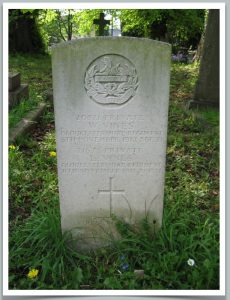15th Battalion, Gloucestershire Regiment

Wilfred Vines was the fifth born of six sons of John William and Emma Vines of The Cloud in Wotton-under-Edge. John was born in Stroud in 1867 and worked as an elastic braider, probably at New Mill, Charfield.
His wife, Emma, was born at Wotton in 1868.
Wilfred was born at Kingswood, Gloucestershire on 19 March 1897 and was educated in Wotton-under-Edge. When enlisting in the Army on 25 May 1915 he would appear to have added a year to his actual age.
His occupation in civilian life was a braider.
Initially he was posted to 14th Battalion, Gloucestershire Regiment.
His Service/Pension Records at the National Archives show that he transferred to 15th Battalion on 11 November 1915.
His medical record in the Army was poor and it was surprising that he was accepted in the first place. He spent the period 17 August to 14 September 1915 in Southern General Hospital, Bristol, suffering from pleurisy and from 12 April to 2 May 1916 in Chiseldon Camp Military Hospital (Swindon), again with pleurisy.
He appears not to have served overseas.
According to the Wotton Gazette of 17 November 1917, whilst in Southern General Hospital, he met King George V and Queen Mary.
He was discharged from the Army on 30 May 1916 following a Medical Board held on 17 May for reasons of ‘debility and underdevelopment’. The Board’s decision was that they did not consider him worthy of an Army Pension, as his ‘disability was not aggravated by military service but capacity was lessened by it’.
His mother lodged a personal appeal, on 23 May, stating that he was in good health upon joining the Army but was now disabled in the right hand and a local doctor had put it in splints.
He was re-examined by an Army doctor, who certified that he was suffering from a disease of the right wrist (probably tubercular) and that he was wholly unfit for work. On 25 August 1916 a certificate was produced showing that he was a patient in Gloucester Royal Infirmary, suffering from tubercular disease of the right wrist joint – which may have been caused, secondarily by
an injury to the right wrist. The question of the injury proved contentious.
Wilfred claimed that this had been sustained at Chiseldon, whilst practising bayonet fighting, when he fell into a trench. However, this could not be corroborated, as the supervising officers at the time were now serving abroad. There was also a query as to the fact that when the incident was supposed to have taken place, Wilfred was in hospital.
A final medical report was issued on 7 November 1916 and it stated ‘he is a poor looking lad, weakly underdeveloped, anaemic lad. There is a tubercular disease of the second and fourth metacarpals of right hand, with discharging sinuses permanent – may improve.’ Total incapacity was granted, with his condition being regarded (for pension purposes) as being aggravated by service since the declaration of war. It added a rider – ‘a doubtful case – especially as regards to accident to hand’.
Almost a year later, on 5 November 1917, Wilfred died, at home in Wotton, aged just 21 with the cause of death stated as tubercular meningitis. After a funeral in St Mary’s Church, on 11 November 1917, he was laid to rest in the churchyard.
Almost another year later, he was joined by his brother Leslie, who died on 11 November 1918, having been discharged from the Army in 1915. They lie in a joint grave, with their names jointly on the headstone.
Wilfred Vines has an entry in De Ruvigny’s Roll of Honour 1914-1924.
Research by Graham Adams (following original research by Bill Griffiths) 17 January 2012 (revised 10 August 2021)
